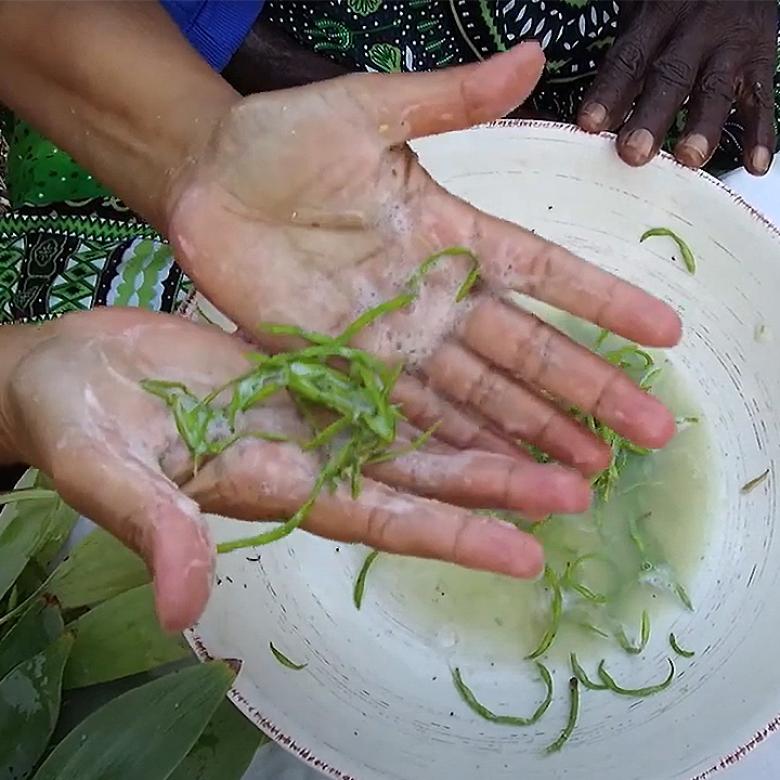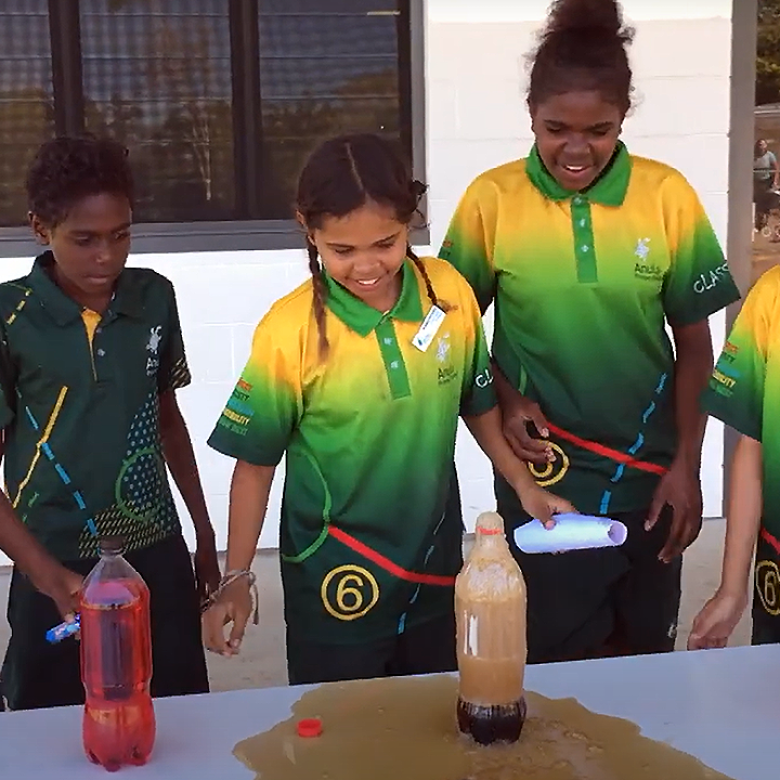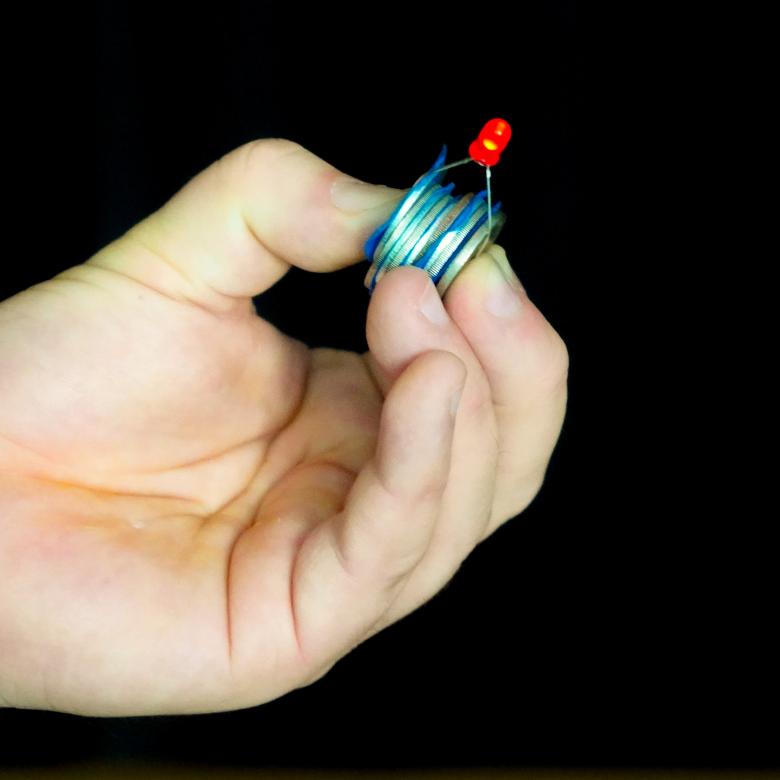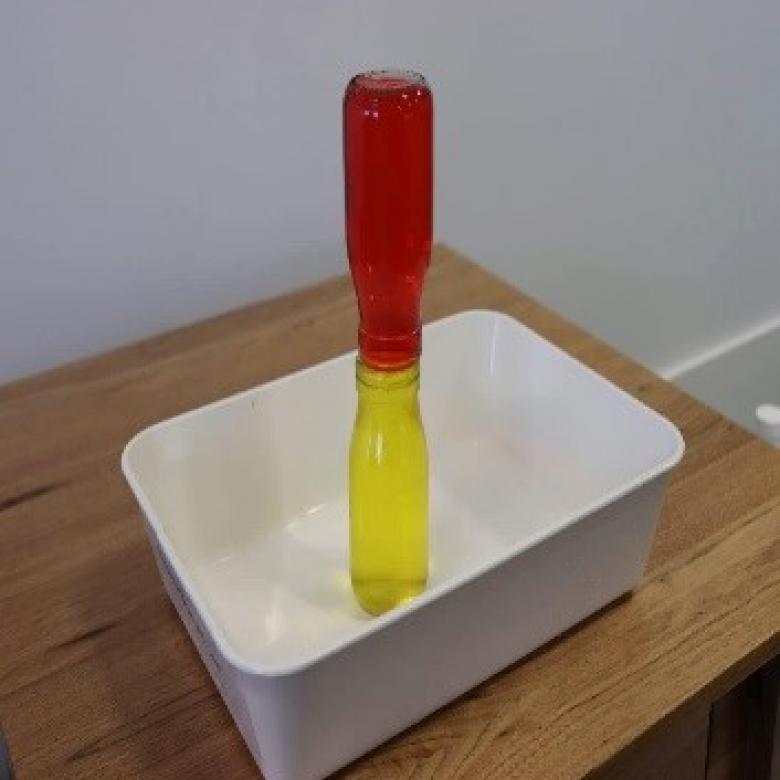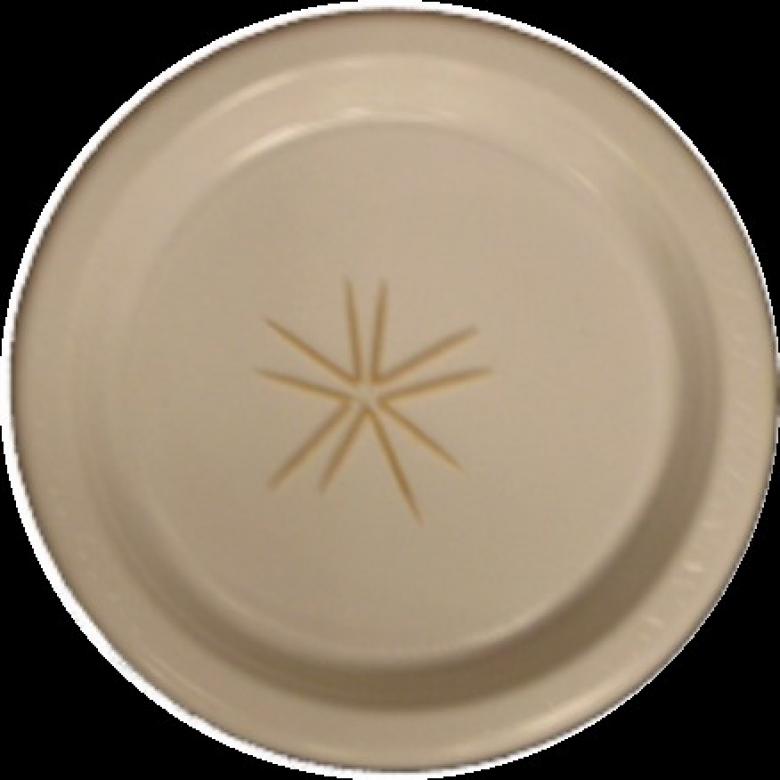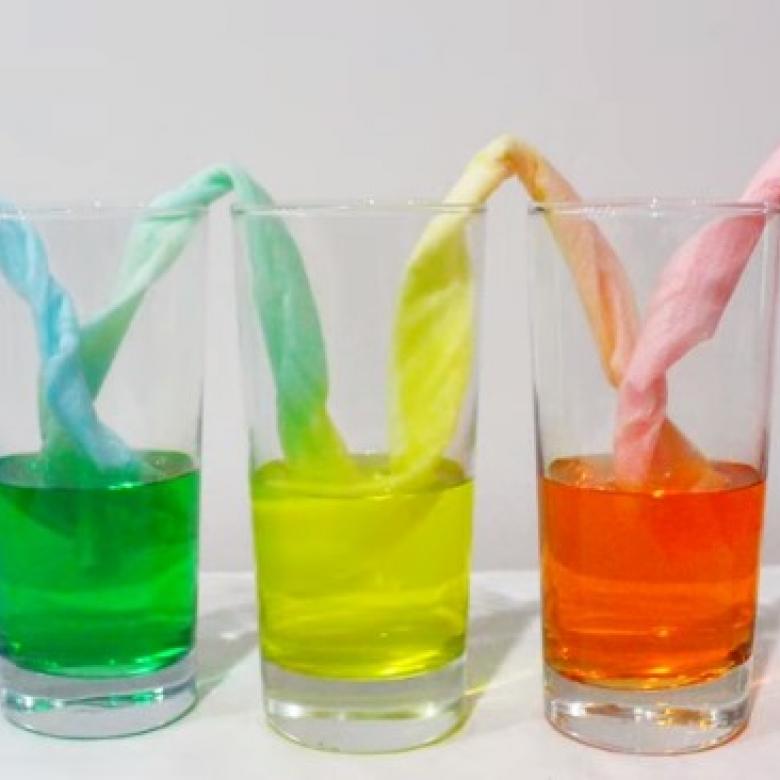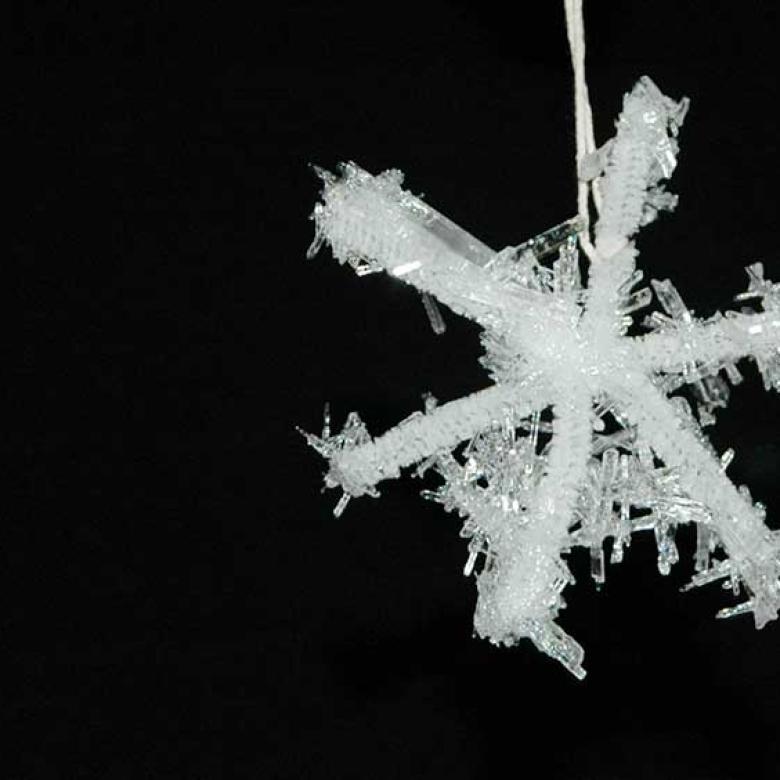You’ll need
- 2 heaped teaspoons of turmeric
- 3 disposable plastic cups
- Methylated spirits
- 2 disposable plastic spoons
- A piece of unbleached toilet paper (toilet paper that has not been whitened)
- Scissors
- A disposable plastic plate
- 2 teaspoons of bicarbonate of soda (also called bicarb soda and sodium bicarbonate)
- 2 teaspoons of water
- 2 teaspoons of vinegar
What to do
- Gather your materials on a flat surface.
- Put the turmeric in a plastic cup.
- Cover the turmeric with about 3 cm of methylated spirits and stir with a plastic spoon.
- Put the sheet of toilet paper on the plastic plate.
- Let the turmeric settle to the bottom of the cup. Carefully pour only the yellow liquid onto the toilet paper until the toilet paper is yellow.
- Leave the turmeric-dyed toilet paper to dry.
- Use the scissors to cut the turmeric-dyed toilet paper into strips.
- Put the bicarbonate of soda in a clean cup and add 2 teaspoons of water. Mix using a clean plastic spoon.
- Put the vinegar in the third cup.
- Dip one strip of the yellow toilet paper into the bicarbonate of soda solution. Watch what happens.
- Dip the same strip of toilet paper into the vinegar. Watch what happens.
Questions to ask
What happened when you dipped the turmeric-dyed toilet paper into the bicarbonate of soda solution? What happened when you then dipped it into the vinegar?
What happens when you dip another strip of the turmeric-dyed toilet paper into vinegar first?
What happens when you dip strips of the turmeric-dyed toilet paper into other liquids? Try milk, soapy water, lemon juice, soft drink or coffee.
What's happening
The quantity pH tells you how acidic or basic (also called alkaline) a solution is. If there are more hydrogen ions (H+) than hydroxide ions (OH-), the solution is acidic (pH between 1.0 and 6.9). If there are more hydroxide ions than hydrogen ions, the solution is alkaline (pH between 7.1 and 14). If the amounts of the 2 ions are the same – like in pure water – the solution is neutral (pH of 7.0).
Some chemicals change colour depending on the acidity of a solution. They can be used to measure the pH of the solution. Turmeric is a natural pH indicator. It changes colour between a pH of about 7.4 and 8.6. If turmeric is put in a solution with a pH less than 7.4 (acid or neutral), it stays yellow. If it is put in a solution with pH greater than 8.6 (alkaline), it turns dark pink or red.
Curcumin is the chemical that gives turmeric its yellow colour. The high concentrations of hydroxide ions in alkaline solutions cause a change in the chemical structure of curcumin. This makes it change colour.
Bicarbonate of soda solution is alkaline, so the turmeric-dyed toilet paper changes from yellow to dark pink or red. Vinegar is acidic, so the turmeric-dyed toilet paper turns from dark pink or red back to yellow.
Did you know
There are many different types of pH indicators, and each changes colour at a particular pH level. This usually means that a single pH indicator will only tell you the general pH range of a solution. To accurately work out the pH of a solution, you usually need to use several different indicators and compare the results. One might tell you that the pH is less than 4. The next tells you that it is more than 3, so now you have a good idea what it is.


